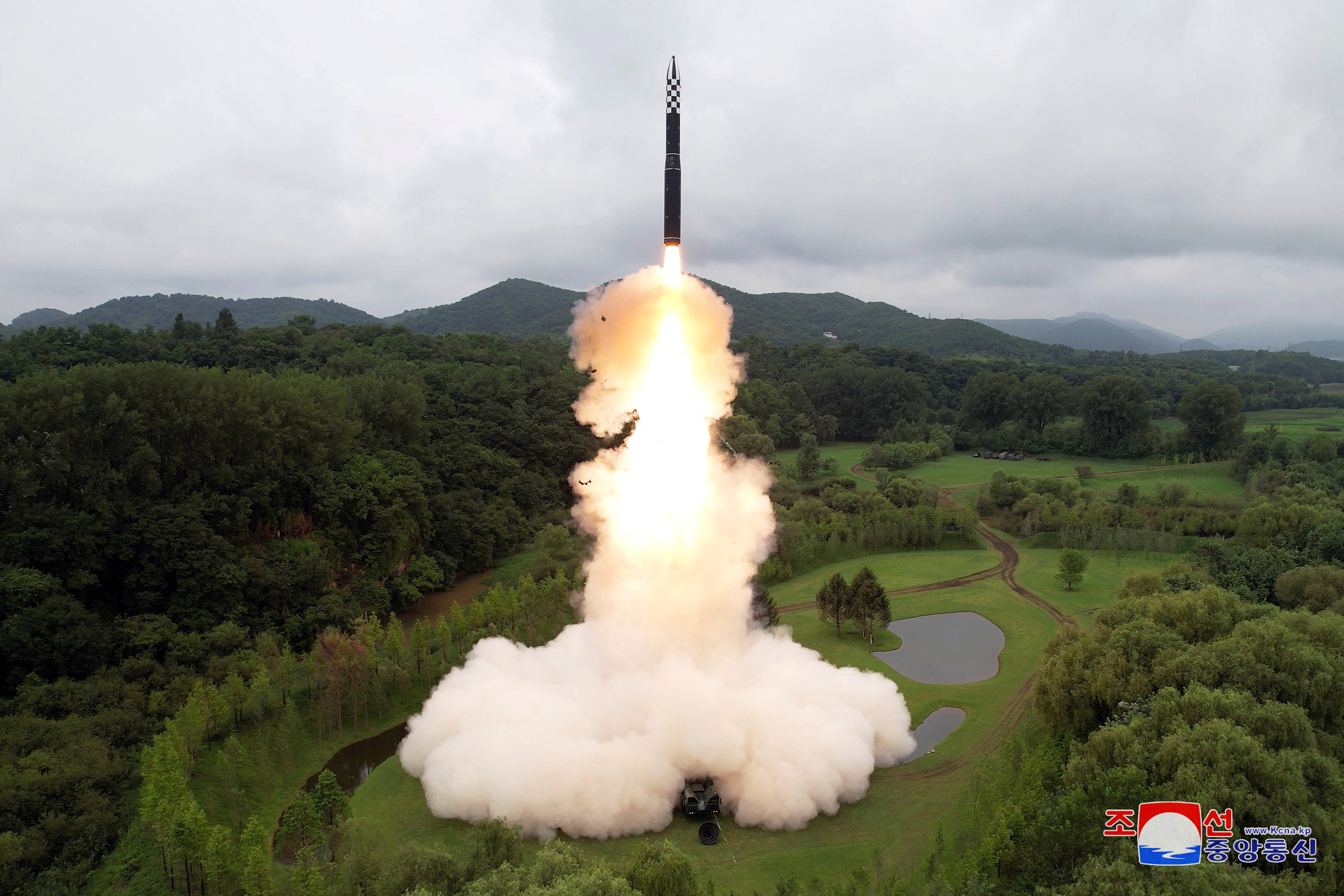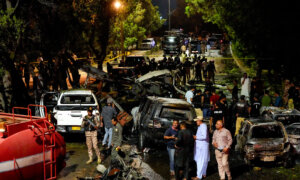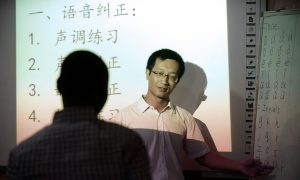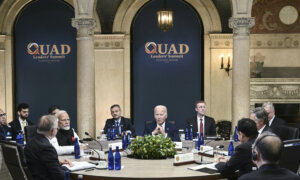South Korean lawmakers have reported that North Korea has positioned a launcher for an intercontinental ballistic missile (ICBM) that it may set off around the time of the Nov. 5 U.S. presidential election.
Citing military intelligence, South Korean parliamentary members briefed reporters after a closed-door hearing with Defense Intelligence Agency officials on Oct. 30.
“Preparations of a transporter-erector launcher (TEL) are complete, and it’s deployed at a specific location, and an ICBM launch for technological verification of warhead re-entry could take place, with a timing targeting the U.S. presidential election, either before or after, in November,” South Korean Member of Parliament (MP) Lee Seong-kweun said at the press briefing on Wednesday.
MP Park Sun-won said the intelligence agency believes a missile may have been transported to the launch site but has not yet been loaded.
North Korean leader Kim Jong Un earlier this year announced an acceleration of its nuclear weapons program amid strengthening ties with Russia, and the Pentagon has recently confirmed that about 10,000 North Korean troops are on the Russian battlefield.
On Wednesday, Russian officials said during a press briefing that it would hold strategic consultations in Moscow with North Korean Foreign Minister Choe Son Hui, who arrived in Russia on Oct. 29. A spokesperson did not confirm whether the visit was related to the war in Ukraine. Still, Russia has not denied the presence of North Korean troops in the war.
Last month, the United States imposed sanctions on a network comprising five groups and one individual for facilitating payments between Russia and North Korea to support Moscow’s war in Ukraine and Pyongyang’s weapons programs.
The U.S. sanctions list was expanded on Wednesday to include 40 additional companies acting as middlemen for Russia.
Korean analysts have warned that the North Korea–Russia partnership could be a significant threat to South Korea.
“The fact that North Korea has voluntarily dispatched their troops to Russia could mean that if there’s an emergency that happens in the Korean peninsula, the Russia military could intervene [to help North Korea], and it could be a threat to South Korea,” said Doo Jin-ho, research fellow and chief of the global strategy division at the Korean Institute for Defense Analyses.
“South Korea has had a special relationship with Russia and has developed bilateral ties with Russia through various diplomatic exchanges and cooperation as an allied nation. However, Russia is becoming a threat, not just as a neighboring country but as a real threat to South Korea.”
ICBMs are long-range missiles capable of striking farther than 3,500 miles, but North Korea’s ICBM test launches thus far have been performed at steep trajectories, dropping the test projectiles at short distances rather than far into the Pacific.
China
Meanwhile, China’s communist regime test-fired an ICBM into the Pacific Ocean last month, the first such test in four decades, and a regional backlash followed swiftly.According to U.S. defense officials, China now has more ICBM launchers than the United States, nearly eight years ahead of schedule, and is estimated to have at least 500 nuclear warheads and 1,000 by 2030.
“China is undergoing the most rapid expansion and ambitious modernization of its nuclear forces in history—almost certainly driven by an aim for enduring strategic competition with the U.S.,” the Pentagon’s 2024 nuclear report reads.
Analysts previously told The Epoch Times the ICBM launch in the Pacific was meant to send a message both domestically and internationally.
Beijing “sent a signal to its adversaries that ‘our missile has the capacity to threaten you,’” said Hsiao-Huang Shu, an associate research fellow at Taiwan’s Institute for National Defense and Security Research. The signal “was meant for the United States and other nations in the region, but mostly the United States.”
Manoj Kewalramani, fellow for China studies and chair of the Indo-Pacific Studies Programme at the Takshashila Institution, said the test seemed like a rushed effort that could be intended to change the narrative among the Chinese as economic stress is mounting amid China’s financial downturn.
This test launch has also spurred Australia to enter what it calls a new “missile age.”
Minister for Defense Industry Pat Conroy said in a speech on Wednesday that Australia is increasing its missile defense and long-range strike capability, announcing the government’s new Guided Weapons and Explosive Ordnance Plan.
“Why do we need more missiles? Strategic competition between the United States and China is a primary feature of Australia’s security environment,” Conroy told the National Press Club in Canberra.
He pointed out that the Chinese military conducted the recent ICBM test into the South Pacific despite the region’s Treaty of Rarotonga “that says the Pacific should be a nuclear weapons-free zone.”
“We expressed significant concern about that ballistic missile test,” he said.
The Guided Weapons and Explosive Ordnance Plan report identified the Chinese Communist Party as a key threat to the region, committing about $49 billion to manufacture missiles and munitions over the next decade domestically.
“China continues to develop the largest ballistic missile program in the world, with an expanded arsenal of cruise and hypersonic missiles,” the report reads. “This is taking place without the strategic reassurance or transparency the region expects from great powers.”
Reuters contributed to this report.














